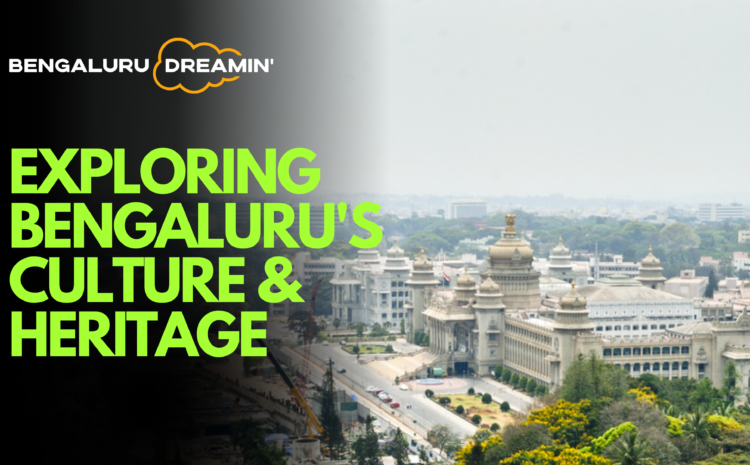Exploring Bengaluru’s Culture & Heritage: A Journey Through its History and Traditions

Historical Evolution:
In the ninth century, Bangalore was known as Bengaval-uru, meaning ‘city of guards.’ Legend has it that in the 12th century, it acquired the name Benda-kaalu-ooru, translating to ‘town of boiled beans.
Kempe Gowda I (17 June 1510 — 1569) locally referred as Nadaprabhu Kempe Gowda, or commonly known as Kempe Gowda, was a governor under the Vijayanagara Empire in early-modern India. He is famous for the development of Bangalore Town in the 16th century. Kempe Gowda erected many Kannada inscriptions across the region.
The Kannadigas envelope most of the state that comprises 30 districts, while Karnataka is also home to Kodavas, Tuluva, and Konkani’s. Kannada is spoken as a native language by about 74% of the people of Karnataka.
Cultural Diversity:
Bengaluru showcases a vibrant culture firmly grounded in its South Indian roots. It cherishes the traditional art forms of Karnataka, such as Yakshagana and Carnatic music. The city also hosts a myriad of festivals, including the famous Bengaluru Habba, showcasing its rich cultural diversity.
The city celebrates what is known to be Bengaluru’s oldest festival called “Karaga Shaktyotsava”. Deepavali, the “Festival of Lights”, transcends demographic and religious lines and is celebrated with great vigour. Dasara, a traditional celebratory hallmark of the old Kingdom of Mysuru is another important festival.

Dasara:




Diwali:



Heritage Sites:
Bangalore is home to several historical landmarks and monuments that date back to different periods of its history. Bangalore Fort ( built by Kempe Gowda in the 16th century), Tipu Sultan’s Fort and Palace, Bangalore Palace, Vidhana Soudha, Mayo Hall, Attara Kacheri, Government Museum.
Vidhana Soudha:

Bangalore Fort:


Mayo Hall:

Government Museum:

Traditional Art Forms:
Bengaluru showcases a vibrant culture firmly grounded in its South Indian roots. It cherishes the traditional art forms of Karnataka, such as Yakshagana and Carnatic music. Yakshagana is a traditional dance drama that originated in Karnataka. It combines dance, music, elaborate costumes, and dialogues to narrate mythological and historical stories.
Mysore Painting is a valuable form of classical South Indian portray, which emerged in and around the town of Mysore in Karnataka, facilitated and cherished by the kings of Mysore.
Yakshagana:



Mysore Painting:

Festivals and Celebration:
Each festival in Karnataka has a story to narrate to history of former rulers and empires. There is so much value given to the culture and ceremonies. From Pattadakkalu Dance Festival to Shravanabelagola Maha Mastakabisheka to Kaveri Sankramana festival, Karnataka is spread across with cultures to admire.


Culinary Heritage:
Karnataka’s culinary heritage is a delightful blend of flavors, textures, and traditions that reflects the state’s varied geography, history, and cultural influences. Rice is a staple food in Karnataka. Popular dishes include Bisi bele bath, Vangi bath, Akki rotti.
Karnataka’s coastal regions offer a plethora of seafood delicacies influenced by the region’s proximity to the Arabian Sea. Dishes like Mangalorean fish curry, Crab sukka, and Neer dosa are some of the highlights of coastal cuisine.
North Karnataka is known for its robust and spicy flavours. Jolada rotti ,Enne rotti and Yennegai are popular dishes from this region.
Jolada roti:


Bisebele bath:

Neer Dosa:

Crab:
